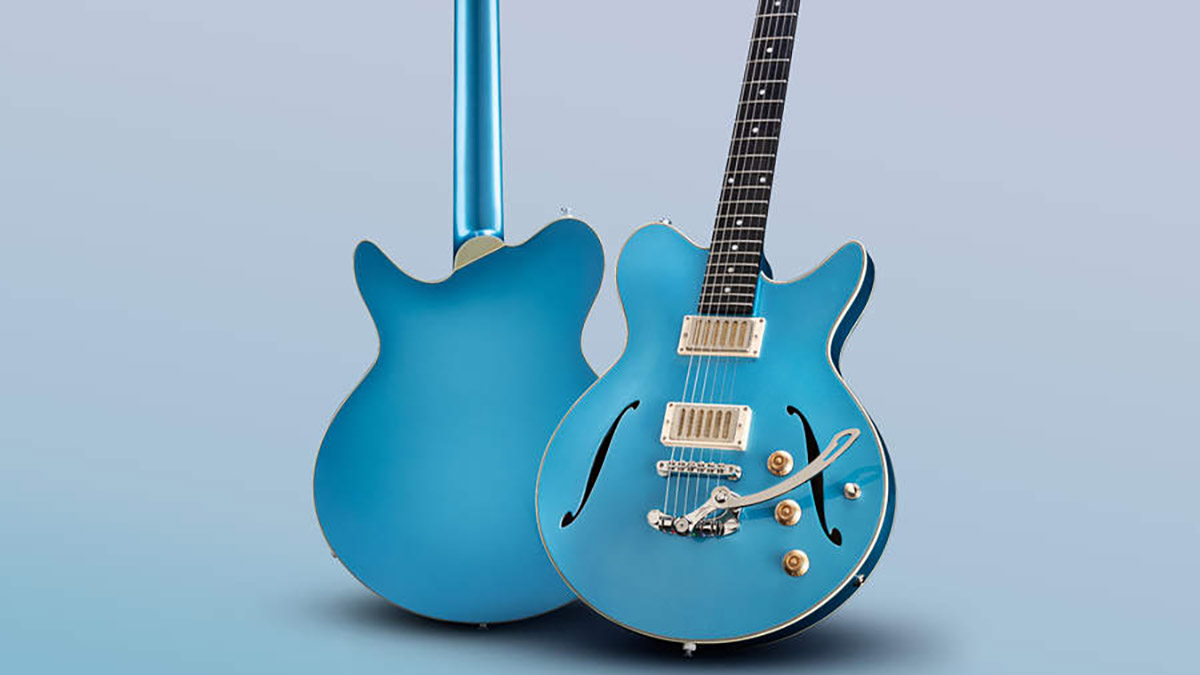GuitarPlayer Verdict
Looking cooler than a cucumber in a polar bear's pocket, this Celestine Blue thinline archtop is off-the-scale fun, with a top-quality build and tones that will please players of many different styles.
Pros
- +
A fun, hot-rodded take on a clever original Eastman design. Very well made for the money.
- +
Fun to play and surprisingly versatile in use.
Cons
- -
Pickup selector switch might prove an awkward reach for some players.
You can trust Guitar Player.
By now, the Eastman String Company should need no introduction to the American guitar community. You might say it’s the company that finally and utterly defied the “budget-brand” preconceptions of Chinese-made guitars by consistently turning out a range of acoustic and electric instruments that compete well against quality guitars of just about any origin.
The original Romeo, released about a year and a half ago, landed in GP’s Gear of the Year selection for 2019, and Eastman has just added to the range with the Romeo LA, a companion model with hot-rodded looks, sounds, and features. Eastman sent us a Romeo LA prototype – one of just two in existence – to put through its paces this issue.
The Romeo LA represents a fundamental rejigging of the formula. Eastman turned once again to Los Angeles–based master luthier Otto D’Ambrosio, who designed the Romeo. Like that original, the Romeo LA is a thinline archtop but made with a laminated spruce top, rather than one of solid spruce. This takes it closer to traditional semi-acoustic characteristics.
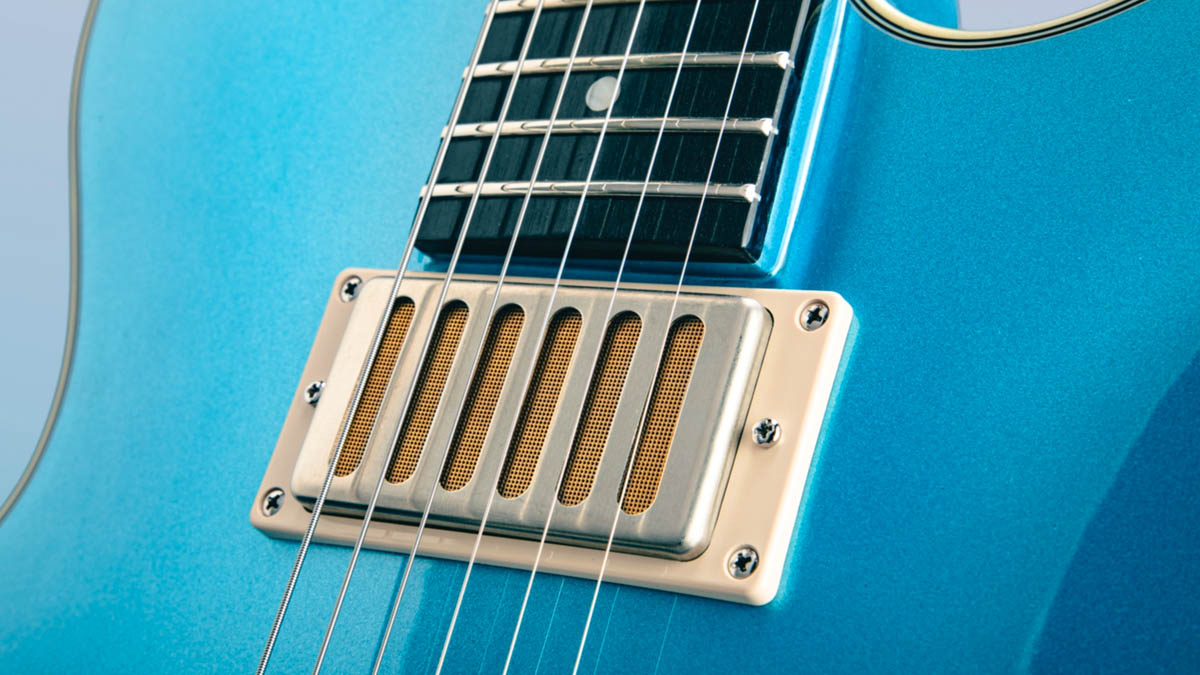
While laminated maple might seem a more obvious choice for a guitar in the ES-335 mold, the laminated spruce adds some sonic enhancements that help differentiate the model. It follows form again, however, with its laminated mahogany back and sides, partial solid-mahogany center block, and maple neck with unbound ebony fingerboard, all of which were found on its predecessors in the Romeo range.
Like the original Romeo and the SC with its Tele-like single-coil neck pickup, the LA has the distinctive body shape. At 14.75 inches wide across the lower bout, it’s slightly narrower than other popular compact semis such as Gibson’s ES-339 and Collings’s I-35 LC, both of which are 15 inches wide.
With a depth of 1.75 inches, it’s just a shade deeper at the edge than those downsized benchmarks. But the real difference in perception and playing feel seems to lie with the positioning of the neck joint deeper into the unique offset double-cutaway body, which shifts all the action further toward the tail end and draws the neck closer to the player’s body as well.
Dress-wise, D’Ambrosio selected a striking Celestine Blue, finished with a nitrocellulose top coat and elegantly complemented by five-ply top binding and three-ply back binding, with a grained ivoroid outer layer and matching ivoroid heel cap.
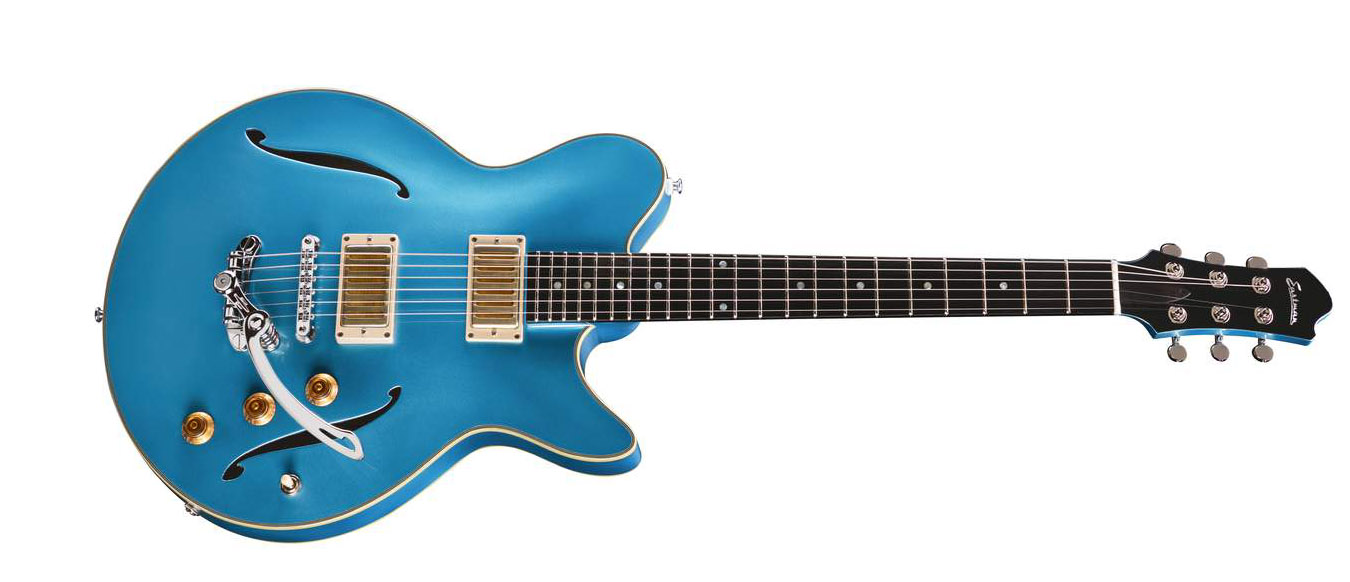
The use of a Göldo LT2 vibrato tailpiece (courtesy of Dieter Goelsdorf, founder of Duesenberg Guitars) adds visual flare, and it solved a puzzle when a more traditional Bigsby B-3 wouldn’t correctly fit the Romeo LA due to its arched top and the scant real estate between its bridge and tail pin.
It has the further benefit of mounting on traditional stop-bar tailpiece studs. The ToM-style bridge is Göldo’s three-point Vario bridge, and the tuners are locking Göldo K-Lines.
To change up the humbucker-fueled tone of the original Romeo, the LA carries a pair of Seymour Duncan Phat Cats, a P-90–style single-coil pickup in a humbucker-sized mount, both under radiator covers with gold-foil inserts to dress up the styling.
These are wired through independent volume controls, a tone control, and a three-way toggle selector. Because the tone control is connected only to the bridge pickup, it functions in the middle position as a master tone control but has no effect when the neck pickup is selected on its own. The Romeo LA impresses right out of the case.
It is beautifully set up and plays superbly in all positions. The frets are impressively well dressed and polished, and Eastman’s “traditional even ‘C’” neck profile feels comfortable and natural. It should appeal to a wide range of players. Our prototype was about 1 3/4 inches across the nut, slightly wider than the final target spec of 1 11/16 inches.
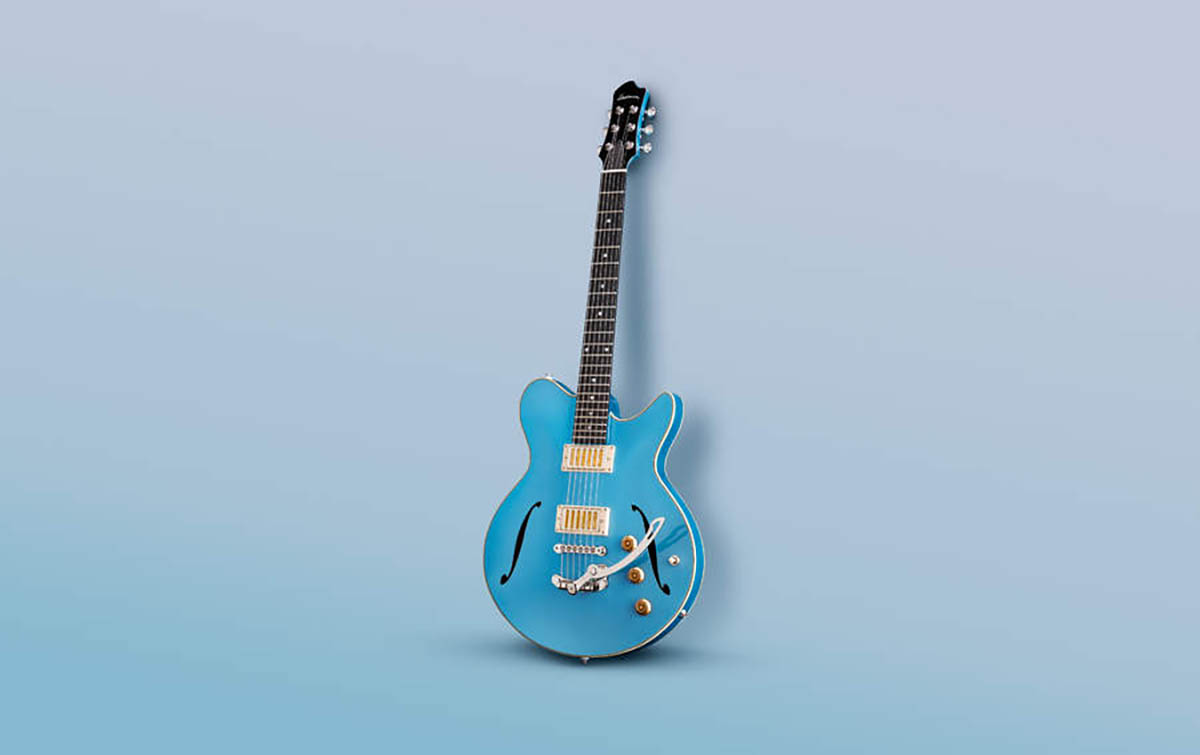
Unplugged, the Romeo LA exhibits a surprisingly bountiful acoustic ring, with bold and clear lows, balanced highs, and appealing detail and liveliness all around.
The only critical note is that the pickup-selector toggle is rather far from playing position and requires a slightly awkward (and not entirely intuitive) reach past both the vibrato arm and the row of control knobs, making it tricky even with the whammy arm folded back. As for the vibrato, the Göldo bridge and LT2 are a great pairing, and the guitar stayed in tune with moderate vibrato use.
Tested through a custom tweed Deluxe-style 1x12 combo and a Friedman Small Box head and 2x12 cab, the Romeo LA revealed a versatile and characterful guitar that’s likely to acquit itself well across a relatively broad range of genres and playing styles.
It exhibited an appealing blend of girth and articulation, all couched in traditional P-90 midrange punch, with enough grit to give it some character. This is a hip-looking newcomer whose tone harkens back to some classics of the ’50s and early ’60s.
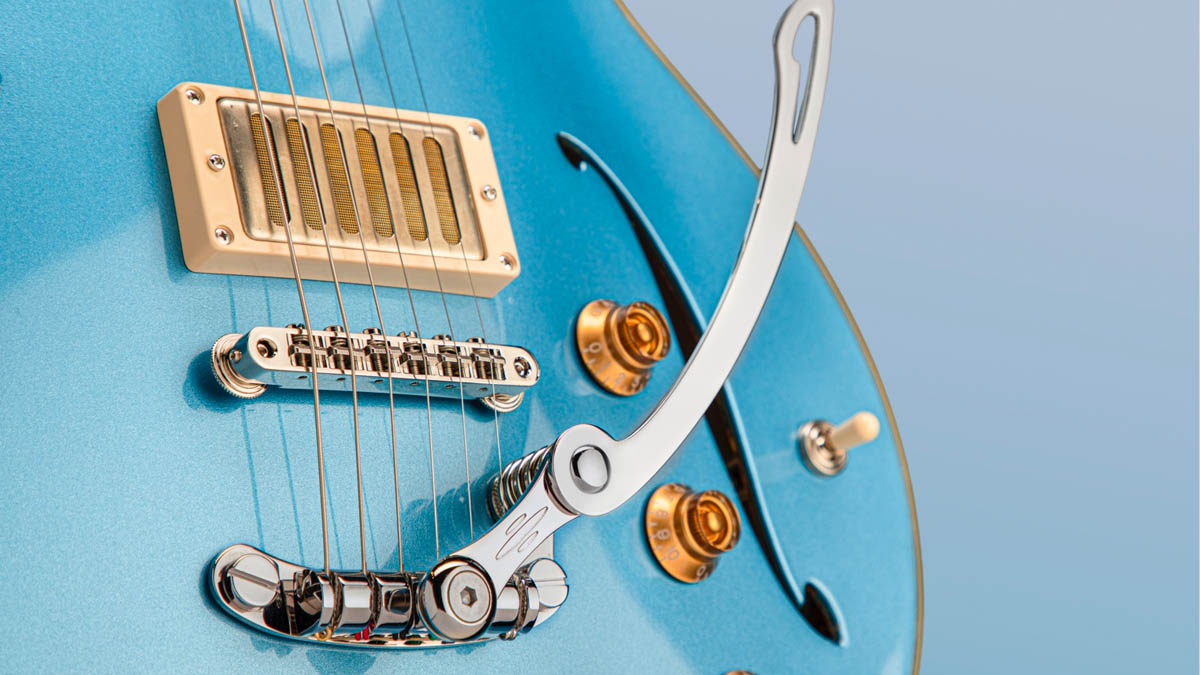
The use of laminated spruce seems to add a lively, raucous complexity to the tone, making the Romeo LA something all its own, rather than just a compact 335 cut to a different shape. Played clean, it isn’t “Strat pickup bright” into a tame amp but has clarity enough for unsullied pop ballad work or gritty-edged country.
However, it really excels into a cranked lead channel or overdrive pedal (I tested it with a JHS Bonsai and Wampler Tumnus Deluxe), where the combination of pickups and semi-hollow build deliver muscle and aggression that contain air and roundness within their core.
Get too close to a loud amp and it will start to howl, of course, but it’s manageable with sensible distancing, and that propensity adds to the lively, edge-of-excess feel of scorching solos or big, crunchy rhythm playing.
Although the Romeo LA took well to blues and even some jazz on the neck pickup, it really thrives in roots rock, contemporary-minded rockabilly, indie rock, and romping garage rock, where its gritty, raw, hot-rod nature is allowed to roar through naturally. As such, it’s a fun new offering amid an impressive Eastman lineup, and should find a home with plenty of adventurous players.
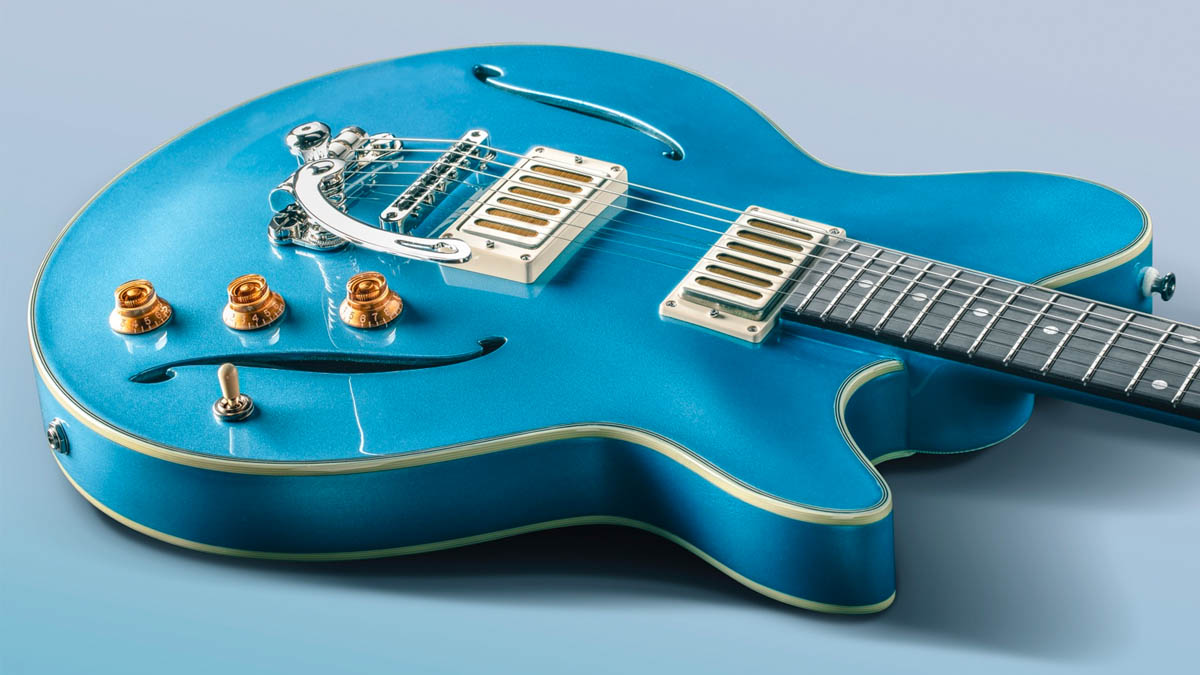
Specifications
- PRICE: $1,399 street
- NUT: Bone, 1 11/16” wide (prototype, as reviewed, is slightly wider)
- NECK: Maple, 24.75” scale length, Traditional Even “C” profile
- FRETBOARD: Ebony, 12” radius
- FRETS: 22 medium-jumbo
- TUNERS: Göldo locking tuners
- BODY: Semi-hollow archtop body made from a laminated spruce top and laminated mahogany back and sides, with partial solid center block
- BRIDGE: Göldo three-point Tune-o-matic-style bridge and LT2 vibrato tailpiece
- PICKUPS: Two Seymour Duncan Phat Cat P-90s with radiator gold foil covers
- CONTROLS: Two volume controls, master tone control, three-way selector switch
- FACTORY STRINGS: D’Addario NYXL .011–.049
- WEIGHT: 6.9 lbs
- BUILT: China
- CONTACT: Eastman Guitars
Dave Hunter is a writer and consulting editor for Guitar Player magazine. His prolific output as author includes Fender 75 Years, The Guitar Amp Handbook, The British Amp Invasion, Ultimate Star Guitars, Guitar Effects Pedals, The Guitar Pickup Handbook, The Fender Telecaster and several other titles. Hunter is a former editor of The Guitar Magazine (UK), and a contributor to Vintage Guitar, Premier Guitar, The Connoisseur and other publications. A contributing essayist to the United States Library of Congress National Recording Preservation Board’s Permanent Archive, he lives in Kittery, ME, with his wife and their two children and fronts the bands A Different Engine and The Stereo Field.
"We tried every guitar for weeks, and nothing would fit. And then, one day, we pulled this out." Mike Campbell on his "Red Dog" Telecaster, the guitar behind Tom Petty & the Heartbreakers' "Refugee" and the focus of two new Fender tribute models
“A good example of how, as artists, you have to blindly move forward with crazy ideas”: The story of Joe Satriani’s showstopping Crystal Planet Ibanez JS prototype – which has just sold for $10,000
